The Channel Islands at war — Resistance through postage stamps
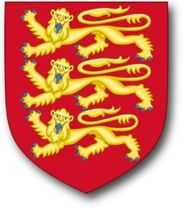
The designer of the Guernsey occupation stamps, E.W. Vaudin, counting on Teutonic ignorance of British tradition, used the Guernsey Coat of Arms for his basic design — three heraldic English lions (or leopards, according to some sources) on a red shield.
The Guernsey Arms derive from seals granted to the island in the late 13th Century by King Edward I. The German occupation authorities in Guernsey apparently were unaware that the Arms were also the personal arms of England’s King George VI, who reigned throughout the Second World War. They are nearly identical to the Jersey Coat of Arms.

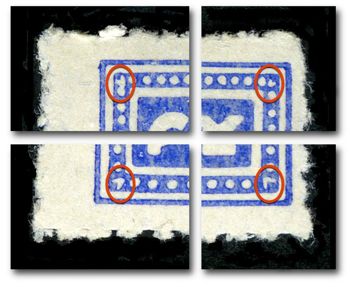
Vaudin didn’t stop with the Guernsey Arms design. He went even further, dangerously etching tiny “V’s” into each corner his three stamps.
During the Second World War, the “V for Victory” symbol was widely incorporated into Allied resistance movements after a Belgian broadcaster suggested its use as a way to frustrate German Occupation forces. “V’s” soon started appearing as graffiti all across occupied Europe.
The Germans appropriated “V for Victory” for their own propaganda, using it, for example, in overprinting Norwegian stamps with a “V,” but they missed the tiny V’s on Guernsey’s occupation stamps. They did not, however, miss every “V” in the Channel Islands: they offered rewards to anyone who turned in a “V for Victory” graffito artist; at least one such artist was arrested and sent to a concentration camp in Germany, where she died.

Col. N.V.L. Rybot insults der Fuhrer — in Latin!
Following the Second World War, Col. Norman Rybot revealed how he came to be involved in the production of Jersey’s occupation stamps. Here is his story, in his words, abridged from his original article:
After the stock of stamps held in the Island’s Post Offices became exhausted during the latter end of 1940, letters had to be handed over the counter with cash in order to be franked by postmark. Though correspondence could only be despatched for inter-insular or local deliveries, this arrangement soon proved to be inconvenient and was presently obviated by the issue, under the orders of the Occupying Authority, of stamps designed and printed locally.
The designs thus approved bore the name of the island, the value of the stamp and the shield of arms of England as borne on the royal seals issued c1290 by Edward I to his Bailiff in each bailiwick…. This true nature of the arms was fortunately unknown to the Germans, who otherwise might well have suppressed the leopards and compelled us to display their barbarous swastika instead.
In January 1941 I was asked by our Bailiff to design a 1d stamp for Jersey and told to base my design on one which had already been approved in Guernsey by the Germans, who would sanction no other.
Not being anxious to assist the Nazis in any way, I hesitated to accede to this request until it occurred to me that it afforded a good opportunity to insult our conquerors with impunity, hence the insertion of the four minute ‘A’s in the corners of the design which were intended to stand for “Ad Avernum, Adolphe Atrox”: that is to say “To Hell with you, Atrocious Adolf”.
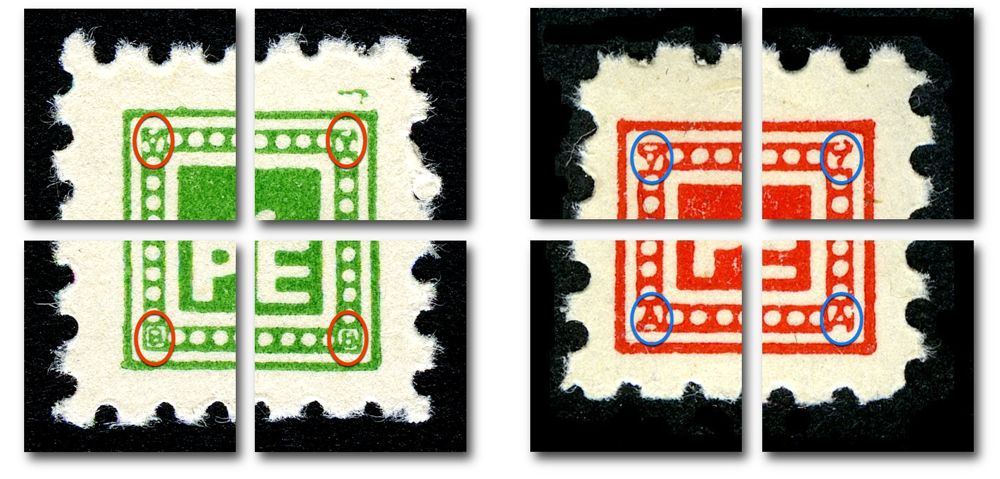
This stamp was issued very appropriately on 1 April 1941; but only a small proportion was used for the purpose for which it was intended, the bulk being greedily purchased, with a view to ultimate gain, by a host of German and local collectors and speculators. The ½d stamp did not appear until 20 January 1942, when the corner letters were changed to ‘A’ ‘A’ and ‘B’ ‘B’, signifying “Atrocious Adolf” and “Bloody Benito”. In connection with these stamps I asked for no fee as a designer, nor was I offered one.
Col. Rybot’s philatelic sabotage was not his only anti-Nazi activity. He wrote a poem commenting acerbically on conditions on the island, and on the ways that islanders were coping with the Occupation — or taking advantage of it. For that story, and the full text of the poem, go to Col. Rybot turns to poetry.
Edmund Blampied trumps the Nazis
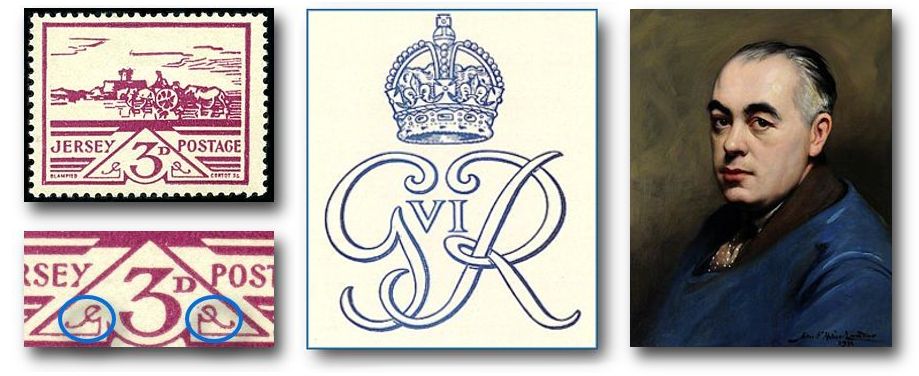
The last stamp issued in German-occupied Jersey was the 3d pictorial stamp, picturing islanders Gathering Seaweed. It was the high-value stamp of the set of six stamps shown on the previous page. Artist Edmund Blampied was told that the stamps could include no reference to Great Britain or the British monarchy. However, like his fellow occupation stamp designers on Jersey and Guernsey, Blampied ignored the Germans: hidden in plain sight within the design of his 3d stamp are the stylized initials “GR,” standing for George Rex (King George VI), representing the king’s royal cypher and displaying loyalty to the king.
Blampied perhaps had more reason than most to resent the presence of German troops, especially the Nazi officers who administered the occupation: Blampied’s Dutch wife, Marianne van Abbe, was a Jew, and therefore subject to deportation and the liklihood of death as a victim of the Holocaust. As the husband of a Jew, Blampied himself was potentially a victim of the Holocaust as well. Nevertheless, Blampied and Marianne chose not to be evacuated but to remain on the island, and so were trapped there throughout the occupation.
During the occupation, Blampied was unable to remain in contact with publishers and art dealers, and had great trouble obtaining artists’ materials. Nevertheless, he was able to continue working.
The pictorial stamps of 1942-1943 were the result of the second commission he received from the German occupation force; the first was a request, due to a shortage of currency in Jersey, to design banknotes in 6p, 1s, 2s, 10s, and 1£ values. Blampied, obviously not one to miss an opportunity, realized that he could perform a small sabotage: the reverse side of the 6d note consist only of the large words, “SIX PENCE”. When the note was folded, the “half-X” became the the resistance symbol “V” for “Victory”. The banknotes were issued in April, 1942.
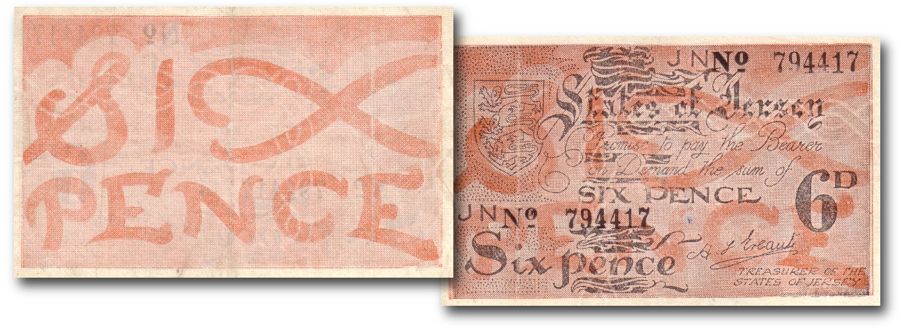
Just as the Germans failed to see the philatelic sabotages created by Col. N.V.L. Rybot and E.W. Vaudin, they also failed to note the significance of Edmund Blampied’s artistic resistance. After the war, Blampied went on to design more Jersey stamps.
Suggested reading:
• The Channel Islands at War — Col. Rybot’s poetic protest: “An Occupation Alphabet,” a poem written in 1944 by the designer of Jersey’s first occupation stamps, protests the German presence in the Channel Islands as well as the unpatriotic behaviour of some of his fellow islanders.
• The Channel Islands at war — The Red Cross Message Scheme: Despite the loss of international mail service, Channel Islanders were able to communicate with friends living abroad, courtesy of the International Committee of the Red Cross.
• The Channel Islands at war — Deportation & imprisonment: British residents living in the Channel Islands, along with some Jews and islanders charged with crimes against the Third Reich, were sent to German internment and concentration camps. Some died there.